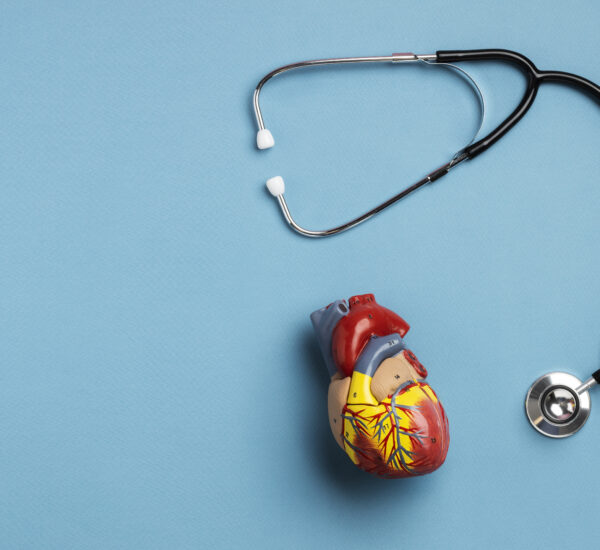Cholesterol is a common term you must have casually heard, be it in health magazines, internet or from someone who has high levels of cholesterol. You may know the basics of it, but do you know what your cholesterol levels indicate and what are the various types of cholesterol?
There are several reasons why you must not neglect high cholesterol levels. For starters, it can be a big red flag for your heart health. Acquainting yourself with these important pieces of information is essential when it comes to managing high levels of cholesterol for a healthier heart.
This article will make cholesterol easier to understand by throwing light on its different types, and what you can do to increase your good cholesterol levels and decrease your bad cholesterol levels.
What is it?
Cholesterol is a waxy, fat-like substance found in all of the body’s cells. It is essential for the body’s proper functioning. It plays a vital role in formation of cell membranes, the production of hormones, and the digestion of fat. Cholesterol is produced naturally by the liver, and it can also be obtained from eating certain foods, such as eggs and red meat.
However, not all cholesterol are the same. Understanding the many forms of cholesterol is critical for optimal health. In this blog, we’ll go over the fundamentals of cholesterol, its activities in the body, and the importance of distinguishing between “good” and “bad” cholesterol.
Types of Cholesterol
LDL
- LDL cholesterol stands for low-density lipoprotein.
- It is often referred to as “bad” cholesterol.
- It transports cholesterol from the liver to cells.
- High levels can lead to plaque buildup in the walls of arteries, making them hard and narrow, and increasing the risk of heart disease.
HDL
- HDL cholesterol stands for high-density lipoprotein.
- It is known as “good” cholesterol because it aids in the removal of various types of cholesterol from your bloodstream.
- HDL picks up excess cholesterol away from the cells and back to the liver for elimination.
- Higher levels of HDL cholesterol helps to lower the risk of heart disease.
Diagnosis
Your cholesterol levels can be measured with a simple blood test. This test may be conducted if you are suspected of having high cholesterol, or it may be performed as part of a health screening. You may be required to fast before the blood test, which means you will not be able to eat. (Take it first thing in the morning, before breakfast.) This test is known as a lipid panel, and it measures:
- Total cholesterol
- LDL cholesterol
- HDL cholesterol
- Triglycerides
Understanding cholesterol numbers
Cholesterol levels are measured in milligrams per deciliter (mg/dL) of blood. A standard cholesterol test typically measures total cholesterol, LDL cholesterol, HDL cholesterol, and triglycerides.
Here’s what the cholesterol numbers mean
Total Cholesterol
Desirable: Less than 200 mg/dL
Borderline high: 200-239 mg/dL
High: 240 mg/dL and above
LDL Cholesterol
Optimal: Less than 100 mg/dL
Near optimal/above optimal: 100-129 mg/dL
Borderline high: 130-159 mg/dL
High: 160-189 mg/dL
Very high: 190 mg/dL and above
HDL Cholesterol
Poor: Less than 40 mg/dL
Better: 40-59 mg/dL
Best: 60 mg/dL and above
Triglycerides
Normal: Less than 150 mg/dL
Borderline high: 150-199 mg/dL
High: 200-499 mg/dL
Very high: 500 mg/dL and above
Maintaining healthy cholesterol levels
Regardless of family history or any previous history of heart disease, you can maintain healthy cholesterol levels for your whole family by following the below tips.
Healthy diet
A healthy diet is the first defence against high cholesterol. Consume a diet rich in fruits and vegetables.
Eat more whole grains, legumes, and heart-healthy fats like olive oil to enhance heart health and cholesterol levels.
Limit saturated and trans fats found in fried foods, processed snacks, and red meat.
Regular exercise
Regular physical activity helps to boost the levels of “good” HDL cholesterol, which will ultimately help in getting “bad” LDL out of your blood.
Engage in at least 150 minutes of moderate-intensity aerobic exercise per week or 75 minutes of intense activity per week, or a combination of the two, spread out over the week.
Maintain a healthy weight
Being overweight or having obesity — defined as a body mass index (BMI) over 30 — can negatively impact levels of cholesterol.
Shedding even a small-to-moderate weight can make an impact on cholesterol levels.
Quit smoking
One of the best ways to improve cholesterol levels is quitting smoking.
Smoking lowers HDL cholesterol and damages blood vessels, increasing the risk of heart disease.
Closing thoughts
Monitoring your cholesterol levels on a regular basis can go a long way in keeping your cholesterol levels in the right range, reducing the risk of cardiovascular diseases (CVD), such as heart disease and stroke.
In general, healthy adults should have their cholesterol checked every year; however, your doctor may request that you have your cholesterol checked more frequently depending on your age, overall health, and other risk factors.
When diet and exercise are insufficient, you may need to take cholesterol medicines. Your doctor may recommend a single prescription or a mix of medications for maintaining optimal cholesterol levels.




